Steve Ewing was a teenager in 1969. He remembers spending his childhood on the Edgartown waterfront, working on the Chappy Ferry that back then only had one small barge to service a handful of year-round residents. He remembers Main street, with its two or three grocery stores, post office, two barber shops and fleet of New Bedford ships docked at the end of it. He remembers the one retailer that closed for the winter. They sold “fancy stuff.” He remembers his class of 20 kids at the Edgartown School.
“Everybody lived in town,” Mr. Ewing said. “It was all just local people, and everybody walked to school. First grade through eighth grade, everybody came home for lunch. And the high school was upstairs.”
Olive Tomlinson, whose mother was an organizer of the historic Shearer Theatre, grew up spending summers as part of a tight-knit African American community of about 50 families in the Oak Bluffs highlands. She remembers the non-winterized homes of her friends, the clothes constantly line-drying outside because no one had clothes dryers, the party line extensions, the walks to the Inkwell, wild berries, unpaved roads, and the all-white East Chop Beach Club — both in attire and in admittance.
She also remembers the paddle boats in Lake Anthony, today the Oak Bluffs harbor.
“I miss, more than anything in the world, the paddle boats,” Ms. Tomlinson said. “They were inexpensive, environmentally correct, safe and wonderful. The Vineyard was very — what’s the word — sweet? No . . . quaint! Quaint, that’s the word. And the paddle boat sums it up.”
Mr. Ewing remembered too that money was hard to come by for many year-round Islanders. In 1964, the Edgartown annual town budget was $400,000. Last year it was upwards of $30 million.
“Everybody was poor,” Mr. Ewing said. “Nobody could afford to go off-Island. Barely. But, in 1964, my dad, making less than a carpenter, with four boys, bought a house on upper Main street for $12,000 . . . It was simple, a small town. Classic Norman Rockwell stuff. The police station was in the town hall. The fire station was where the visitor center was. Everything was downtown. Everything was low key.”
Mr. Ewing of course also remembers the fateful day Ted Kennedy drove off the Dike Bridge in July 1969. He was working as a deckhand on the Chappy Ferry.
“Chappy really put us on the map,” he said. “And history changed. Ted probably would have been president.”
While Mr. Ewing is right that Chappaquiddick and its aftermath left an indelible mark on the Vineyard — and in the American consciousness — there’s little historical evidence that the event itself spurred the broadscale population change and development that occurred on the Island over the next 50 years. In fact, there is evidence to suggest it had started long beforehand.
Beginning in 1940, and continuing almost every year after, the Gazette ran a January story reporting on ferry traffic for the year. Headlines told the story. “Ferry Traffic Shows a Marked Increase,” one said in 1949. “Season Is the Real Thing, Boat Records Show,” declared another in 1950. “Ferry Traffic Booming, Steamers Hit New High,” said another in 1952.
By 1959, 30,000 more cars had come than 10 years prior. From 1966 through 1968, passenger traffic increased nearly 40 per cent.
Then came the summer of 1969.
“Islanders who found last summer the busiest, most traffic-congested season in memory were not just being paranoid and misanthropic,” the Gazette reported in a story that ran in February 1970. “There were 41,856 more passengers carried by authority vessels and 11,408 more cars than were ferried between Woods Hole and Vineyard Haven and Oak Bluffs in 1968.” Freight travel also increased by 10 per cent. “This, an authority spokesman believes, probably is a result of increased building and development on the Island.”
Few Steamship Authority press releases would ever prove so prescient.
![]()
By 1970, the silt had settled at the bottom of Poucha Pond, and the Vineyard, for the most part, remained an Island that looked and felt much the same as it had for generations. It was still a place where Islanders watched Walter Cronkite’s daily small steps toward the Edgartown Paper Store, just as they had watched him announce mankind’s giant ones on national television. It was an Island of harpoon fishermen and electrical linemen, dependent on a seasonal economy but not overwhelmed by it. Islanders sniffed Lillian Hellman’s cigarettes and waited in line at Cronig’s alongside the opera diva Beverly Sills.
Yet change was coming.
One year after Chappaquiddick, the first jet planes had landed on Martha’s Vineyard. Everything else sort of took off from there.
“The seventies were the moment when the Island, collectively, started to have this still ongoing — and probably ongoing in perpetuity — conversation about how do you balance development and preservation,” said Bow Van Riper, archivist and historian for the Martha’s Vineyard Museum. “And I think that ties in to a degree with the sort of national zeitgeist.”
Over in America, the Cuyahoga River caught fire in 1969. The first Earth Day was held in 1970. Dr. Seuss published The Lorax in 1971.
On the Island, George Moffett donated Felix Neck to the Audubon Society in 1968. The Vineyard Open Land Foundation was founded the year after. The first osprey pole went up in 1971. The first bike paths were laid in 1972. And although Sen. Ted Kennedy’s bill to take the Vineyard and Nantucket into a national land trust failed, as a compromise, the Martha’s Vineyard Commission was created in 1974. It was a first-of-its-kind regional planning agency chartered with unusual powers to preserve the unique natural, historical, ecological, scientific and cultural values of the Vineyard.
And by the late 1970s, the newly-formed commission had a lot of work to do.
Jim Athearn, who grew up in the 1950s on Music street in West Tisbury, remembered the woods in his backyard. They extended all the way to Chilmark. On Old County Road, there was one house between the Granary Gallery and Vineyard Haven.
“I used to range around as well as I could on my one-speed bike,” Mr. Athearn recalled. “All those plains were just scrub oak and wild animals. And there weren’t any trails through there. Nobody knew what was in there. And nobody cared.”
In the 1970s, however, proposals for subdivisions began to appear as developers bought up fractured titles and penny lots throughout West Tisbury, Katama, Chappaquiddick, Longview and along the Vineyard Haven-Edgartown Road. Their names, like Cranberry Acres, Skiff’s Northern Pines, Deer Run and Mattakesett reinforced the feeling for many Vineyarders that their forest preserves were being carved up and transformed into suburban Connecticut. For off-Islanders buying the homes, and the off-Islanders developing them, that was exactly the point. Subdivisions appeared at a rate of 700 new homes per year.
“The idea of subdivisions, I probably couldn’t have told you what a subdivision was when I was 12,” Mr. Athearn said. “Then I came back from college, and there was a subdivision here, subdivisions there. They were marketed aggressively, and real estate values went up . . . It’s an evolution of history — of time, opportunity and affluence.”
The Gazette, under the editorship of Henry Beetle Hough and later Richard Reston, campaigned against development, eventually angering businessmen who saw the newspaper as an obstruction to progress. In 1984, five businessmen founded the Martha’s Vineyard Times — a direct reflection of the divide that had torn through the Island in the latter half of the decade.
One year later, the Martha’s Vineyard Land Bank was founded, ensuring that two per cent of every real estate transaction would go toward land preservation.
Contemporaneous with the rise of preservationism was a rise in historical consciousness on the Island. The Martha’s Vineyard Preservation Trust was founded in 1975. The Flying Horses carousel was placed on the national register in 1979. The William Street historic district was incorporated in 1983. The Edgartown historic district followed later in the same year.
“It was as if people woke up and went, oh my god, if we don’t start doing something right now, the wagon’s going to tip over the top of the hill and go careening over the other side and we’ll never be able to control it,” Mr. Van Riper said. “And you see that play out, not just in the creation of regulatory bodies or in the attempts, successful or unsuccessful, to mitigate the effects of development. You see it in, I think, a growing Islandwide awareness that something has changed and that this is a conversation that has to be had, that unbridled development is no longer a viable strategy.”
The fights extended beyond preservation into the plainly outlandish. The Island blocked McDonald’s from coming to Vineyard Haven in the famous 1978 Sack the Mac campaign. It stopped the Nobnocket development in the 1980s — a proposed 55,000-square-foot mall, supermarket and bank on State Road in Vineyard Haven. When Massachusetts redistricted in 1977, lumping the Vineyard in with part of the Cape and Nantucket, a rebellious strand of Vineyarders proposed a half-serious protest to secede. A flag was sewn and a national anthem was written (“From East Chop Light to Menemsha Bight”). Although secession fizzled, it was later hailed by John Alley of West Tisbury as a great success.
“We got scads of publicity, which is what a resort community needs. The place became far more popular than it already was. In retrospect, if we had another opportunity, I think we’d all do it again,” Mr. Alley said in a 2007 Martha’s Vineyard Magazine story about the movement.
The 1970s and 1980s were a heady time on the Vineyard, a fulcrum upon which the Island of old teetered against the new weight of popularity and population growth. Steve Spielberg arrived with Hollywood, turning the Vineyard into Amity Island and the backdrop for the biggest summer blockbuster of the decade. Other films had been made on the Island, but a 1921 silent melodrama called Annabelle Lee didn’t have quite the same luster. Roy Scheider said, “we’re gonna need a bigger boat” and the Steamship Authority took it literally, retiring the Nobska and bringing the Nantucket online.
It was a time in which an Island averse to change was finally forced to confront it.
![]()
Then the 1990s arrived. They brought change with a capital C. It stood for Clinton.
Rose Styron and her husband Bill bought their house on the Vineyard Haven harbor, sight unseen, for $75,000 in 1965. They were part of an intellectual, Washingtonian and New Yorker social milieu that came up from the swamps of D.C. and Manhattan to cool off for the summer, engaging in tennis matches, late-night card games, sailing trips and fishing forays.

“It was almost like a secret,” Mrs. Styron, who lives in the same house year-round now. “It was lovely, peaceful, and not crowded at all . . . it seemed like a wonderful, sleepy little Island. And I don’t think it became unsleepy until the Clintons came in the nineties. And then it became a destination.”
One member of Mrs. Styron’s social circle — which extended from Gay Head to Cape Pogue — was Washington Post publisher Katharine (Kay) Graham. Mrs. Graham had purchased a large tract of virgin land in West Tisbury during the 1970s called Mohu, and had many connections on the Island, including with former Secretary of Defense Robert McNamara. The Clintons stayed in the McNamara house for their first Vineyard visit.
“I remember when the Clintons were coming,” Mrs. Styron recalled. “Kay said, you have to come look at this house with me. It looks like a camp. McNamara must have lived out of a backpack.”
There was little furniture. There were brown quarry tiles in the bathroom and wooden countertops in the kitchen. The bedrooms had sleeping lofts. And the entire south section of the house was built for passive solar heating with expansive glass windows. There were no curtains.
“What were the Secret Service going to do?” Mrs. Styron said. “Who can make curtains in a week?”
In five days, Mrs. Styron and Mrs. Graham readied the house for the President of the United States and his enormous entourage, fixing up the interior and hanging the blinds. But when the president arrived, he immediately drew them to the world.“The Clintons, even more than Chappaquiddick, even more than Jaws, put Martha’s Vineyard on the international radar,” Mr. Van Riper said. “It was the first time I think that the Island had a celebrity visitor who, just by their presence on the Island, radically altered the rhythms of life.”
There was no such thing as Bill Clinton going quietly to Mad Martha’s for ice cream, eating a private dinner on Circuit avenue or relaxing at the beach. Not when the guy with the nuclear codes was waiting in the sand dunes, the SWAT team readied in the trees, the 18-wheeler satellite truck following along to upload television stories.
“Everything was exacerbated by the fact that Bill Clinton was Bill Clinton,” Mr. Van Riper said. “He really did have this incredibly charismatic aura and need to make contact with everybody within arms reach or earshot . . . That made every place he went and everything he did into a gigantic public event. It felt like another up-plateau in terms of the Island being more crowded.”
Just before the Clintons arrived, other factors had begun to contribute to the sense of overcrowding on the Island. Interstate 495, which provides highway access to Cape Cod, was pushed all the way through to the Bourne Bridge in 1987. The Steamship Authority retired the Uncatena and replaced it with the larger Martha’s Vineyard in 1993.
Traffic went up, on the street, on the sidewalk, on the dock and in the harbor.
“I have pictures of Bill Clinton walking down Circuit avenue,” Ms. Tomlinson said. “Now you can’t even fit down Circuit avenue.”
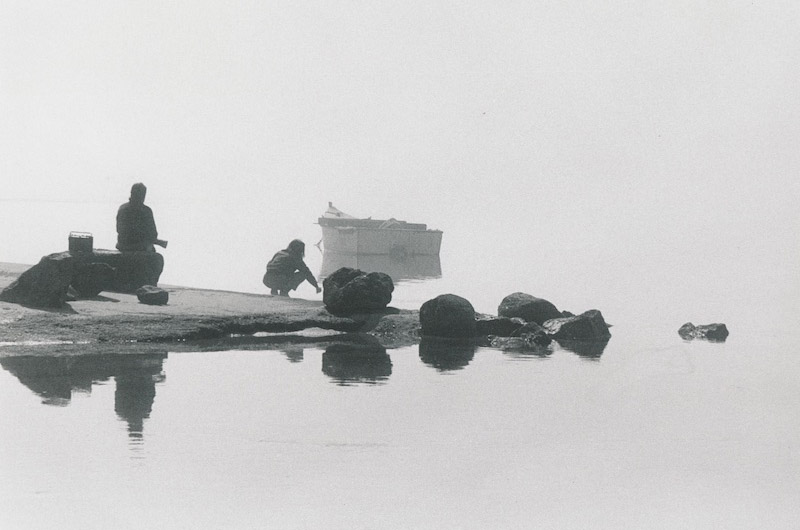
But probably the single best symbol of explosive change on the Vineyard is the real estate market.
Julie Flanders, the third generation of her family to sell homes on the Island, described what was once an eclectic community of up-Island buyers, generally artists, intellectuals, musicians and professors, most of whom wanted the peace and tranquility that mid-20th century Chilmark, West Tisbury and Aquinnah provided. The down-Island buyers in West Chop, East Chop, and Edgartown were similar, just more social.
“The people who ended up buying in the fifties, sixties and seventies were people who came to get away from the heat,” Ms. Flanders said. “They bought cottages.”
Changes began to occur with development in the latter half of the 20th century. With the new growth, a new generation of buyer started coming to the Vineyard — one that preferred landing on the Island by private jet over docking on it by ferry, and was more interested in insulation than in isolation. The new summer residents wanted the amenities and comforts of their mainland lives while being as physically distant from them as possible.
And in the post-Clinton era, houses got more spacious.
“That’s when we started to have what I call large houses that started to get built,” Ms. Flanders said. “The Vineyard became more of a trend, and that, too, was a shock and a wakeup call.”
Abby Rabinowitz, co-owner of Tea Lane Realty, cited subtle factors that influenced the market, including the advent of zoning and a conservation movement that worked at a furious pace to keep land out of development.
“These are just some of the factors that have led to a shift in supply and demand,” Ms. Rabinowitz said. “And in many respects they have been very wonderful. They have allowed us to preserve the Vineyard and keep something that is lasting and maintains the magic and spirit of it . . . I think that the challenge in it is in the housing shortage for year-round residents today, which is so real.”
As the days of buying a home for less than $500,000 on the Vineyard are gone, so too are many of the eclectics and intelligentsia — professors, artists, writers, and intellectuals — who could afford them. In their place is a new breed of young Vineyard buyer.
“They are looking for a perfectly turnkey house where they can hang up their clothes, have their vacations and leave. And then there is a high-end market that wants a pool, air conditioning, and more,” Ms. Flanders said. “When I was that age, we would buy a cottage and paint it ourselves. They want an indoor shower.”
Through it all, the authenticity of a Vineyard experience has become intensely desirable. People want to play golf at Farm Neck, eat ice cream at Mad Martha’s, stroll Lucy Vincent beach in the morning and Circuit avenue at night. And the authenticity of a property like the McNamara house has become intensely desirable as well. People want the ocean views, the wooden fixtures, the shingled siding, lofted bedrooms and windswept windows. But today they also want the blinds.
“There are lots and lots of people who are buying wonderful, big houses,” Mrs. Styron said. “They are very decent citizens. But they are, for the most part, leading very private lives. And that’s different.”
Such is the nature of the Vineyard in 2019. The old whaling captain’s houses in Edgartown remain, but for most of the year, their occupants do not. The quiet Island and bustling downtown of Steve Ewing and Olive Tomlinson’s youth has reversed — the civic institutions of old replaced by boutique clothing stores and ice cream outlets. Blueberry brambles have been cleared for large homes, and the paddle boat harbor is filled with power boats.
Twenty years after the Clintons, another presidential family arrived, perhaps forever cementing the Island’s status as a destination for the most powerful person in the world.
“Clinton was a president with worldwide publicity,” Mrs. Styron said. “Famous people used to come, but not with the same spotlight on them. And then the Obamas sealed that.”
The Vineyard in the 21st century is one of pop-up Soul Cycles and post-presidential visits. It’s an Island of hedge fund farms and yoga barns, traffic at the Triangle and pretty much everywhere else. It’s an Island with a housing crisis and an environmental crisis — its workforce struggling to find year-round rentals and its only viable port one foot above sea level. It’s an Island arguing over a casino, a wind farm, a housing bank, and yes, another subdivision.
Vestiges of the shabby remain, but for the most part they are gone, replaced by something more chic. There’s an iPad being used in the Back Door Donuts line.
The Vineyard of the 21st century is also nearly a quarter Brazilian Portuguese in the winter, and it plays host to hundreds of Eastern Europeans who come to work in the summer. There are African American members at the East Chop Beach Club and Jewish people who live in West Chop. It’s still an Island of fishermen — many farm oysters or drag for bay scallops — and of small farmers who make their living in the locavore era.
And it’s an Island that, considering its history, has gotten used to change. Jim Athearn compared it to the frog in the boiling pot of water. Bow Van Riper used a lobster. Either way, the metaphor is the same — slowly turn up the water temperature and the frog or lobster will remain comfortable until it dies. But plunge the frog or lobster into the pot with the water boiling, and it will jump right out.
So is the water boiling on Martha’s Vineyard? Surely it is more crowded. And surely it is more expensive. And surely it is hotter — both literally and figuratively.
But it still remains the Island that captures the heart of everyone who comes. The sun must set every day, and on the Vineyard it sets over Menemsha harbor. Nothing can change that. Not even pools in the North Road backyards.
“It’s good. I still love it here,” Ms. Tomlinson said. “But pools? Pools are a sin from God.”

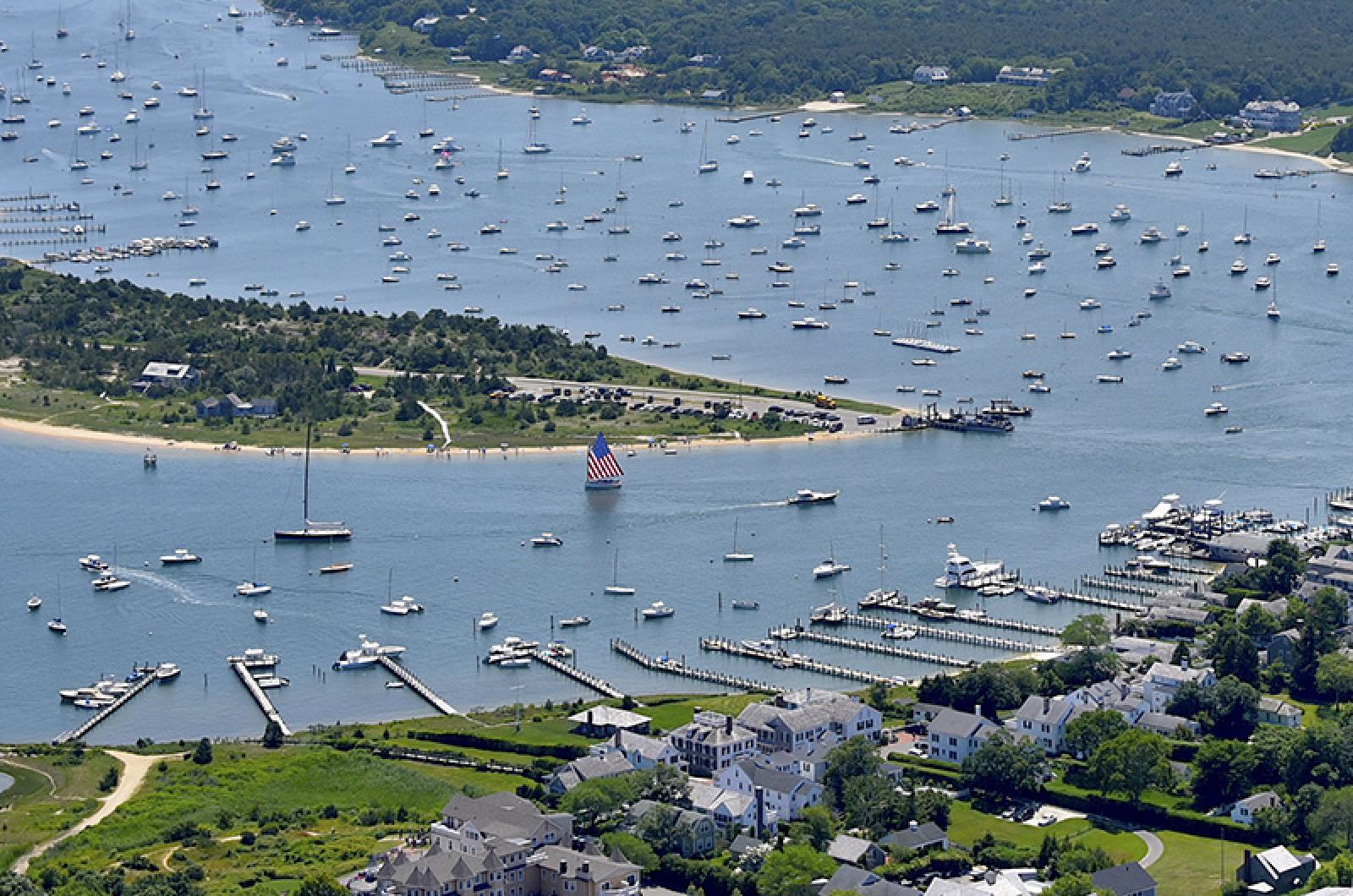
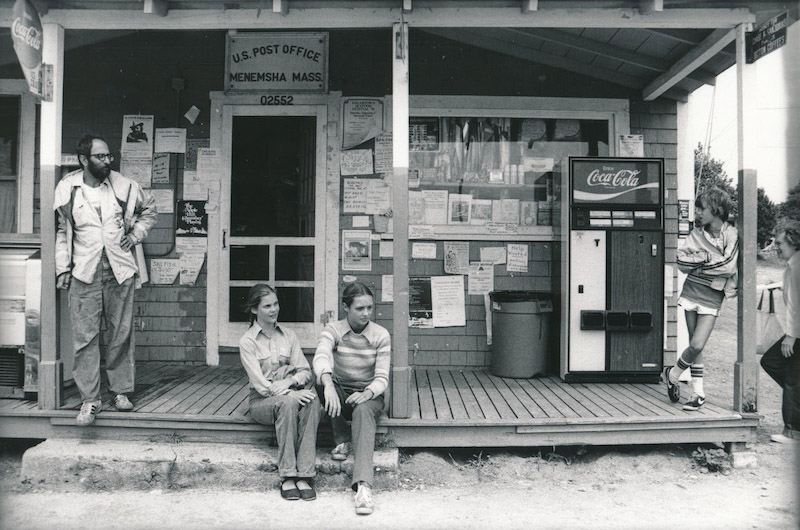

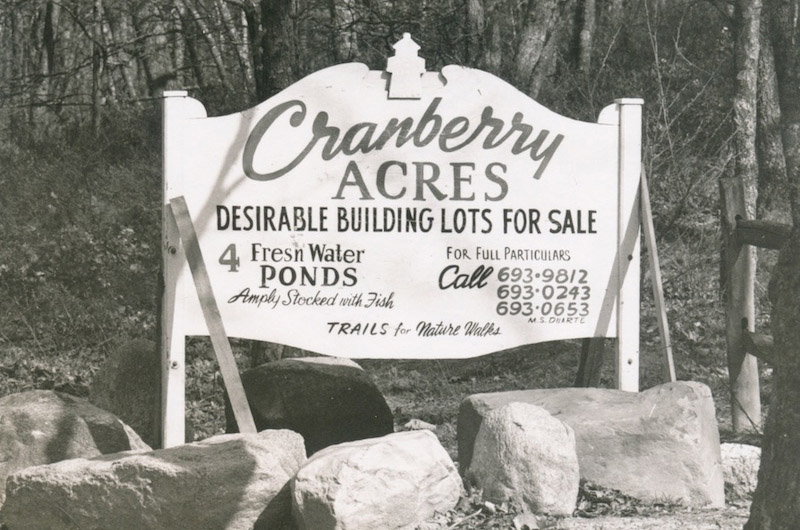
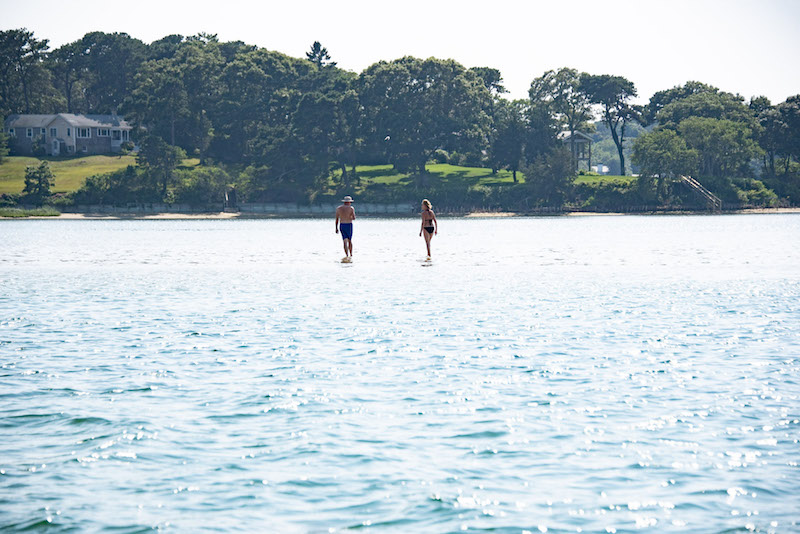





Comments (55)
Pages
Comments
Comment policy »